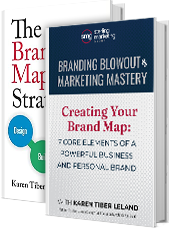Creating a CEO personal brand is no longer optional but essential. Research underscores its significant impact on company reputation, customer decisions, talent acquisition, investor confidence, and CEO performance. Despite this, many CEOs still lack a tailored personal brand. Real-world examples highlight its effectiveness in various scenarios, from IPO preparation to career transitions. Building a CEO brand involves defining a unique platform, expanding awareness, and establishing thought leadership, emphasizing consistency and authenticity. Overcoming reluctance towards self-promotion is key, reframing it as a means to contribute value. As the business world evolves, leveraging social media, media outreach, and authentic communication becomes increasingly vital for CEO branding success. Ultimately, investing in a powerful CEO brand is indispensable for long-term organizational success and leadership effectiveness.

The Growing Requirement for Creating a CEO Personal Brand
I start almost every conversation with a new potential CEO client today with the same single statement: “Creating a CEO personal brand that is strong is no longer an option – it’s a necessity.” Whether you aim to boost your current company’s success, attract top talent, secure investments, or plan for your next career move, developing a powerful CEO brand is essential. Your CEO brand is no longer a nice-to-have luxury. It’s a critical responsibility to your company’s overall health and well-being.
The Far-Reaching Impact of Your Personal Brand as a CEO
About half the CEOs I speak with ask me if this stuff “really” makes a difference or if it’s just the latest, greatest fashionable marketing ploy. The studies have been done, and the results are in. Your well-crafted CEO personal brand can have a profound impact on both the success of your company and your future opportunities. Numerous research has shown the undeniably tangible benefits of a strong CEO brand, including:
- Company Reputation: 48% of your company’s reputation can be attributed to your CEO brand, making it a critical factor in shaping public perception.
- Customer Purchasing Decisions: Customers are 61% more likely to purchase from your company if your values as a leader have been clearly communicated on social media.
- Talent Acquisition and Retention: Your strong CEO brand can lead to a 70% increase in attracting and retaining top talent, a crucial advantage in today’s competitive job market.
- Investor Confidence: 87% of investors consider your CEO brand a major factor in their decision to invest, highlighting the importance of a well-established personal brand.
- CEO Performance: The highest-performing CEOs are twice as likely to have at least two active social media accounts as the lowest-performing CEOs, indicating a correlation between personal branding and leadership success.
Despite these compelling statistics, a staggering 61% of CEOs still do not have an actively crafted personal brand. This presents a significant opportunity for forward-thinking leaders like you who are willing to invest time and effort into developing your CEO brand.

Real-World Examples of CEO Branding Success
Throughout my career as a branding strategist, I’ve worked with numerous clients who have leveraged their CEO brand to achieve specific goals. Some notable examples demonstrate the versatility and effectiveness of a strong CEO brand in achieving a wide range of business and personal goals.
- Preparing for an IPO: A client was advised by his board to increase his public presence as the face of the company to ensure a successful IPO. By building his CEO brand, he positioned the company for a solid public offering.
- Attracting Top Talent: A client in the highly competitive real estate construction space struggled to attract skilled employees. By developing the personal brand of the CEO the company saw a dramatic improvement in both the quantity and quality of job applicants.
- Bringing Attention to the Business: A client in the hedge fund industry wanted to increase visibility for his company. Through a targeted media outreach campaign, I helped establish the CEO as a thought leader in crypto. This resulted in interviews with major publications and a significant increase in investor interest.
- Transitioning to a New Career: Many clients have used their CEO brand to successfully transition to new ventures, such as consulting, speaking, or writing, after exiting their previous companies.

The Three Phases of Building Your CEO Brand
Building your strong CEO brand is a strategic process that involves three key phases:
- Designing Your Brand Platform: It is incumbent on you to define your brand positioning beyond your job title so that it encompasses your unique value proposition, philosophy, and goals. In addition, by developing your signature style, you ensure that your visual presentation aligns with your brand identity, including creating collateral, such as a professional bio and headshots, to support your branding efforts. Finally, a strong brand platform means establishing your online presence, including a well-crafted LinkedIn profile and potentially a personal website.
- Expanding Brand Awareness: Once your platform is in place, focus on strategic “buzz building” through targeted touchpoints. This means selecting the most effective tactics for your brand, such as social media, video content, speaking engagements, and PR. The key is to avoid what I call “drunk marketing” by ensuring that your chosen tactics align with your overall brand strategy. The bottom line in this phase is consistency. Commit to regularly engaging with your audience through your selected channels.
- Establishing Thought Leadership: The goal is to position your CEO brand by sharing insights and perspectives that inform, inspire, and influence others in your industry. Your focus should be on consistently creating valuable content, such as blog posts, articles, podcasts, or videos, that showcase your unique expertise and ideas. One word of caution. Aim for an 80/20 split, with 80% of your content focused on thought leadership and no more than 20% on company-specific information.
Throughout this process, it’s crucial to remember that building your CEO brand is a marathon, not a sprint. Consistency, authenticity, and patience are crucial to establishing a solid reputation and lasting impact.
Overcoming Your Resistance to Self-Promotion
Many of my CEO clients struggle with promoting themselves, feeling that it may come across as bragging or taking credit away from their team. One participant in my workshop shared, “I’ve always deflected credit… I think that’s something I have to get out of… I’ve had trouble balancing the fine line between feeling like I’m taking credit and building a personal CEO brand.”
I address this common concern by reframing the purpose of CEO branding: It’s not about bragging or taking credit. It’s about putting your CEO brand out there in a way so that you can make your contribution. If you don’t do it, the result is that you don’t make your contribution. By focusing on the value you can provide and the ideas you stand for, you can build a CEO brand that inspires and engages others without seeming self-centered or pompous.

The Future of Your CEO Brand
As the business world continues to evolve, the importance of your strong CEO personal brand will only grow. The rise of social media and AI is increasing the competition for talent and investment. Individual leaders who neglect their personal CEO brand risk falling behind. To stay ahead of the curve, consider these key points:
- Use social media to build awareness of your CEO brand and thought leadership.
- Proactively engage in media outreach to build your CEO brand and thought leadership.
- Clearly articulate your CEO brand and thought leadership, speaking authentically and to the point about your brand attributes, promise, and uniqueness.
- Speak at webinars, industry conferences, association meetings, and other groups interested in your thought leadership.
- Identify the core ideas of your CEO brand and thought leadership, integrating them into content such as blogs, posts, social media, and videos.
- Post regular, quality content around your thought leadership to build your CEO brand.
- Define the profile and characteristics of your ideal audience for your CEO brand and thought leadership, developing outreach that speaks to those audiences.
- Update your LinkedIn and other social media profiles to ensure they are well-designed, well-written, and fit with your current thought leadership and CEO brand.
Remember, building your powerful CEO brand takes time and effort, but the rewards – for both you and your company – are well worth it. By investing in your personal brand and adapting to the changing landscape, you can position yourself and your organization for long-term success. Having a strong CEO brand is not a luxury in today’s click-and-find world – it’s your obligation as a leader. The only question remaining for you, the modern CEO, is not “Am I going to do this?” but “How well?”
